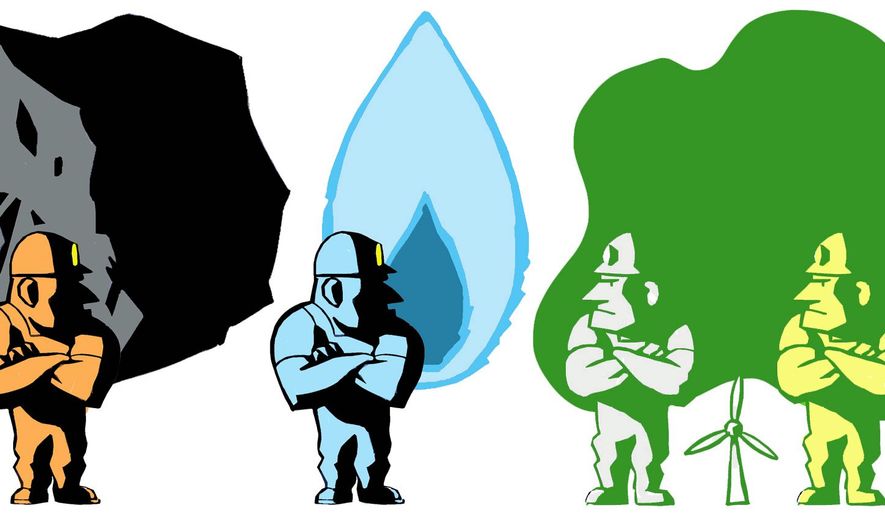OPINION:
One of the main reasons President Trump pulled the United States out of the Paris climate agreement is the treaty is a “bad deal for America.” Among many other problems, it would cost a significant number of jobs. In support of his claim, Mr. Trump cited a study by NERA Economic Consulting that estimates if the United States were to meet its carbon-dioxide emissions reduction obligations under the Paris climate agreement, it would cost the economy nearly $3 trillion and the United States would lose 6.5 million industrial jobs by 2040, including 3.1 million in the manufacturing sector.
Since Mr. Trump’s announcement, many advocates for staying in the treaty have either questioned the president’s claim about job losses or said green-energy technologies, especially solar, are engines of job creation that would benefit if the United States were to stay in the Paris agreement. They have argued there are now more jobs in the solar segments of the electric power industry than in the coal, natural gas and oil segments combined.
This claim is true — at least, in a limited sense. In absolute numbers, the U.S. Department of Energy reports solar power employed 43 percent of the electric power generation sector’s workforce in 2016, employing more than 374,000 workers who construct, assemble, sell or install solar panels. Fossil fuels combined accounted for just 22 percent (187,000) of the jobs directly tied to generating electric power.
Although there are a significant number of solar-related jobs, the often-repeated figures above are very misleading for numerous reasons, of which I’ll name a few.
First, these numbers leave out the mining jobs associated with coal production and the jobs related to the production of oil and gas. The Energy Department report notes fuel production and electricity generation combined directly employed 1.9 million workers in 2016, with 55 percent, or 1.1 million jobs, related to fossil fuels. This also ignores the thousands of jobs tied to the transportation of fossil fuels and the jobs provided by oil and gas refineries and chemical plants. Similarly, the numbers ignore the numerous coal-related jobs at steel mills.
Second, many of the jobs created in the solar and wind industries — from construction to power generation — are artifacts of various government interventions in the market. Consumer demand in the marketplace did not create these jobs; billions of dollars in federal government subsidies, tax breaks and loan guarantees were provided to build the factories that churn out wind towers, turbines and solar panels. Billions more were diverted to installing and partially paying for the electricity generated by wind turbines and solar panels.
Solar- and wind-generated power, being much more expensive than conventional fossil-fuel-generated electricity, would only be used sparingly if it weren’t for government support. And while fossil-fuel producers and users pay billions of dollars of taxes and fees to the government, renewable-energy sources are net tax sinks, even when the billions of dollars given through various state governments to the wind and solar industries are ignored.
Renewable-energy producers are also greatly aided by laws imposed by many states forcing utilities within their borders to provide a portion of the electricity they deliver from wind or solar generators, despite the high cost and reliability problems inherent to the technologies.
A third issue ignored by Paris promoters is jobs in the solar industry pay relatively poorly compared to jobs in the coal industry or oil and gas industry. The Bureau of Labor Statistics reports the average solar installer makes between $12 and $15 per hour. By comparison, the average coal miner makes more than $23 per hour, not counting overtime. The average pipe fitter, driller or extraction worker makes between $25 and $31 per hour before overtime.
The most glaring problem for green-energy proponents is the jobs created by the wind- and solar-generated energy industries are relatively wasteful and inefficient compared to traditional energy jobs. As my friend and colleague Paul Driessen pointed out in recent paper, 398,000 natural-gas workers produced 33.8 percent of all electricity generated in the United States in 2016. More than 160,000 coal employees produced 30.4 percent of all electricity generated. In the same year, it took an astounding 374,000 solar workers to produce just 0.9 percent of the nation’s total electricity generation and 100,000 wind employees to produce 5.6 percent of total electricity.
That means while coal generates 7,745 megawatt-hours (MWH) of electricity per worker and natural gas generates 3,812 MWH of electricity per worker, wind generates just 836 MWH per worker and solar delivers a dismal 98 MWH per worker. “In other words, producing the same amount of electricity requires one coal worker, two natural gas workers, 12 wind industry employees or 79 solar workers,” Mr. Driessen wrote.
Keep these facts in mind the next time someone tells you about the wonderful “green economy” Mr. Trump allegedly abandoned when he walked away from the Paris climate agreement.
• H. Sterling Burnett is a research fellow on energy and the environment at The Heartland Institute.




Please read our comment policy before commenting.